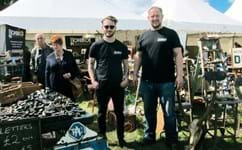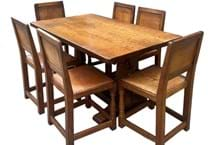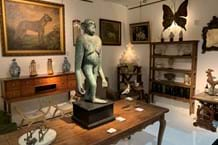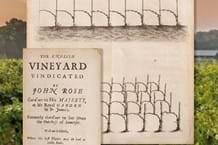
Had this been a matter of party politics, there would have been an outcry over bias.
In a recent interview, president of Born Free Foundation Will Travers held aloft an ivory carving of a capsicum* that he says was judged to be antique by seven auctioneers. He omitted to say who those auctioneers were, how old they said it was or even if Japanese works of art was their specialism.
I am not surprised that a general dealer did not notice the subtle differences in quality between old and newer shibayama work that would have been immediately apparent to a specialist.
It is for that very reason I have been lobbying for four years to establish an ‘antique ivory committee’ that would be able to give free specialist advice to anyone on any object. Had it been supported from day one, we would now have a government-backed committee with full access to scientific methods (when required) that would have been the envy of the world in policing and exterminating the illegal trade.
I get that, to the public at large and the British media in general, anyone who speaks up to protect antique ivory or dispute the ‘facts’ expressed by any wildlife campaigner is the bad guy. The bad guy apparently is not the African poacher, the official or customs officer, the members of the criminal gangs that murder to maintain their Far Eastern shipping routes or the carving factories (licensed or otherwise) selling newly worked or raw ivory to Chinese buyers.
Be clear – there has been no ‘calm and serious’ debate on the issue of antique ivory
As far as everyone in the UK is concerned, the real culprits are a handful of general antique dealers who couldn’t accurately date one Japanese shibayama carving because it was not their area of expertise.
Let us be clear. There has been no ‘calm and serious’ debate on the issue of antique ivory. Even the recent motion in the House of Lords began from the position that ‘something must be done’.
We have had laws that have made trading in post-1947 ivory illegal for many decades. There is no need for future legislation on this issue – all that is required is the proper enforcement of these laws. If there is any evidence of illegal activity, let us see those responsible arrested, fined and imprisoned. If expertise is required from specialists then they are here, waiting to help.
But let us also have the discussion, without bias, on the ‘facts’ around antique ivory. Otherwise I can see that both elephants and historic works of art will simply be in greater danger of destruction and everyone on every side of this debate will have lost.
Michael Baggott
Michael Baggott Antiques
* In November last year, Born Free published a story about a shibayama inlaid ivory carving of a capsicum that had been confiscated from an antiques fair at Alexandra Palace in London in 2016. The campaigners said that “seven reputable auction houses said they would be happy to offer for sale on the basis that it was manufactured before 1947”. It was subjected to carbon-dating, when it was found to have been carved from ivory taken from an elephant as recently as 2004.
“We do not believe that dealers are able to accurately establish the age or provenance of ivory items by eye,” said Will Travers.













